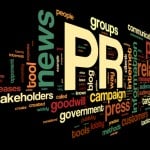10 Reasons Why You Should Stop Spending Money on Print
Let’s get straight to the point.
Brochures and printed sales collateral have had their day.
That day has passed.
But so many building materials companies are still tightly hanging on to their perceived need to print things.
I understand it’s hard to let go of what worked so well for so long. I mean, my grandmother still refuses to use a cell phone, insisting on using a landline with — *gasp* — a cord.
And I don’t blame her.
Change is hard.
The change from print to digital is harder than most because print worked for so long to carry information from person to person.
Think about it. It all started back when cavemen were writing about their conquests on cave walls. Then monks were hand-copying tomes to keep the information in circulation during the Dark Ages. Then Guttenberg invented the printing press, and the world changed forever. Then newspapers spread that information en masse. Then printing and shipping became more advanced, and businesses began printing sales materials and handing or mailing them out.
That printed sales material worked. Printed materials may also feel more comfortable because you an touch and feel a brochure.
But another shift has happened, and too many building materials businesses are losing out because they haven’t made the change.
Print Might Be Pinching Your Profits
What if I told you that relying on printed sales collateral is hurting your bottom line? Or making sales more difficult?
That’s hard for a lot of businesses to hear – but it’s the truth.
Here are ten things to consider if you’re still spending money on printing materials:
1. Brochures end up in the trash
Sad, but true. Your customers are not neatly filing away your product brochure after your sales meeting ends. Whether they buy from you or not, that brochure is headed straight for the trashcan.
And a lot of printed materials end up unused in the salesman’s trunk.
There are three words for this: waste of budget.
2. Printed materials paint your company as stuck in the past
Printed brochures don’t reflect where your brand is going. Especially if you pride yourself on innovation and forward-thinking, printed sales collateral sends the opposite message to buyers. Printed materials scream “old-fashioned,” “stuck in the past” and “irrelevant.”
Printed materials also communicate to customers that you are really not a green company.
3. Printed sales collateral does only one job
What about product video? Customer testimonials? The ability to capture buyer information on the fly? Or tracking how your sales materials are used by the buyer?
A brochure can’t do any of that. But there are digital tools that can.
4. Print is hard to change
Company and product specs change over time. With printed sales collateral, every change requires printing a whole new batch. And the old batch gets thrown in the trash. That’s a one-two punch of wasted budget and wasted product.
5. Print is hard to distribute
Every time you print a batch of brochures, you need to get them into the hands of your sales team and dealers. That often requires additional shipping costs.
Then your sales reps need to get those brochures into the hands of prospective architects, contractors, and homebuilders. That requires reps to tote stacks or boxes of printed materials to sales meetings.
This is inefficient at every step.
6. Brochures are hard for buyers to share with decision-makers
Let’s say you get the printed collateral into the prospective buyer’s hands. Great! But what if there are more decision-makers than you were aware of? That one little brochure now has to change hands from John in Oakland to Sean in Detroit, and on to Zach in Los Angeles.
Do you really think Zach is going to get his hands on that brochure? Unlikely.
7. Printed assets undersell
A printed brochure doesn’t have the deep function a digital brochure does. It can’t be adjusted quickly to meet customer demands, and it can’t have interactive elements that engage today’s busy buyers.
Frankly, a brochure doesn’t do much to sell your product or service. (Though it may make a nice coaster.)
8. The math is … ugly
Let’s crunch the numbers. We’ll look at your return on investment: the cost of your printed brochures versus the customer attention they get you.
First – design and copywriting time. Let’s be generous and say that it costs you $10,000 to have a designer and copywriter create the brochure template.
Now say you print 50,000 brochures, and they cost you $2 each. That’s another $100,000 in production costs.
Let’s be generous again and say that there is no wastage and that 25% of buyers spend at least 2 minutes reading them.
That’s $110,000 total cost / 12,500 readers = $8.80 per brochure. Then divide that by 2 minutes, and that’s $4.40 per minute of your buyer’s time.
If you’re selling a high-dollar product that may not look too bad … until you compare it to the cost of a digital brochure.
You’ve still got the design and copywriting time costing $10,000.
Then instead of print production costs, you have a monthly cost for a digital sales enablement tool. A year’s subscription would be around $240 for one sales rep.
We’ll say again that 25% of the buyers spend at least 2 minutes reading the digital brochure.
So that’s $10,240 total cost / 12,500 readers = $0.82 per viewing. Then divided by 2 minutes, that’s $0.41 per minute of your buyer’s time.
Isn’t that math a little friendlier to your tight marketing budget?
9. The new digital tools do not have a big learning curve
One thing we hear from more experienced sales reps is that the new digital tools seem so complicated.
But here’s the thing. Digital sales enablement tools have come a long way. Tools like Showcase Workshop are intuitive, fast and – if you can manage to use a simple app on your smartphone – have little to no learning curve.
10. Digitizing sales collateral through a dedicated sales enablement tool speeds up the sales process
Much of the sales enablement content that your sales team needs is in folders or manuals at the office, or on the company intranet, right? Either way, sales reps have to go back to the office, pull up that info, type it out (if it’s printed or otherwise not easily shared) and email it to the customer after the sales meeting.
That not only slows down the sales process, but it actually gives buyers time to forget about you – or worse, change their mind about buying.
The easiest, most cost-effective solution is to employ a sales enablement tool that works on your smartphone or tablet, so you can give the buyer what they need during the sales conversation.
Using a sales enablement tool like this does one other important thing: it makes your sales conversations measurable, so you can improve your process and make even more sales. You’ll know how many people saw your brochure, how much time they spent on it and what they clicked on.
It’s Time to Make the Move from Print to Digital
The transition away from print can seem difficult. But with the right tools, it’s not.
Recent reports show that 28% of marketers have reduced their advertising budget to fund more digital marketing. So if you’re still hung up on using printed sales collateral, let me leave you with these three questions.
- Have you actually asked your customers if they still want paper brochures?
- Do you give your sales team and your customers the option to get an electronic file instead? Why or why not?
- When was the last time you really sat down and considered the $ allocated to print in your annual budget?
Stop acting like an Old White Guy and make the move from print to digital.
Thanks to Millie Blackwell from Showcase Workshop for these valuable insights.
Still not convinced? You can read ten more reasons to ditch print that I wrote.
Subscribe To My Newsletter
If you like what I say, sign up for my newsletter here and get my weekly newsletter every Sunday night.
Thanks for the following comments. I’d like to hear your feedback and suggestions on how to sell architects.
“Makes sense to me.”
Mike Flaim
Outside Sales Representative
Oldcastle
“A good read. And, is applicable to many industries.”
Tim Rudd
Owner
Independent Solutions, LLC









